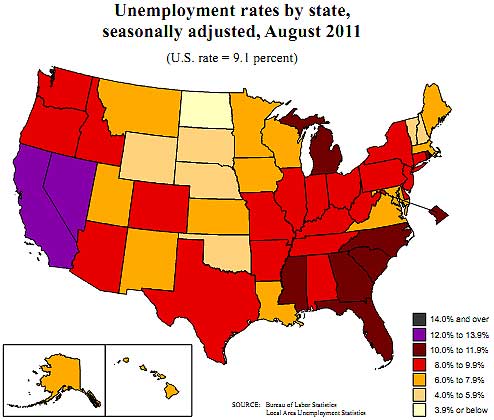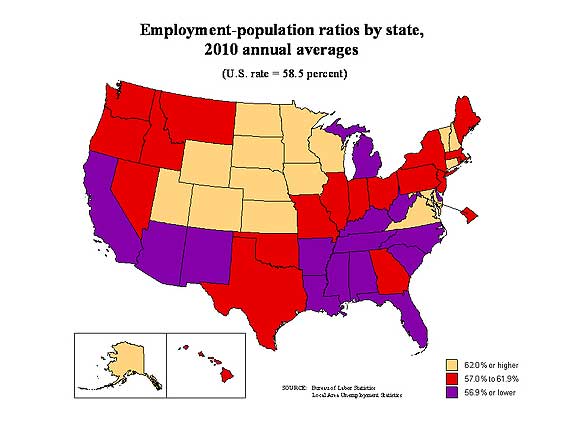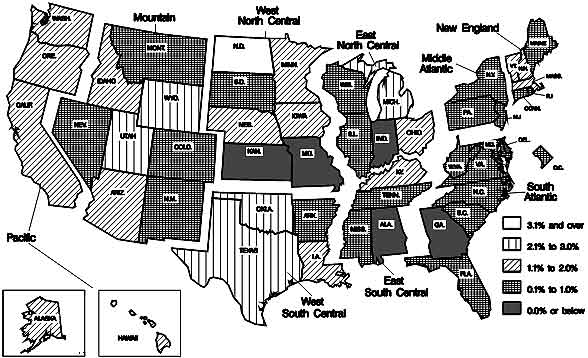The State Unemployment statistics for August 2011 were released. These states, in order, have unemployment rates at or above 10%: Nevada, 13.4%, California, 12.1%, Michigan 11.2%, South Carolina, 11.1%, District of Columbia, 11.1%, Florida, 10.7%, Rhode Island, 10.6%, Georgia 10.2%, North Carolina, 10.4%, Mississippi, 10.3%. 20 States are above the national unemployment rate of 9.1%. Below is the BLS map of unemployment rates for each state.

Twenty-six states and the District of Columbia reported unemployment rate increases, 12 states recorded rate decreases, and 12 states had no rate change.
Payroll jobs for the month look bleak and declined in the majority of States:
Nonfarm payroll employment decreased in 30 states and the District of Columbia and increased in 20 states.
The largest over-the-month decrease in employment occurred in New York (-22,700), followed by Georgia (-18,200) and the District of Columbia (-12,500).
The largest over-the-month increase in employment occurred in Minnesota (+28,400), followed by North Carolina (+16,500), Arizona (+15,400), and Florida (+9,900).
The District of Columbia experienced the largest over-the-month percentage decline in employment (-1.8 percent), followed by Rhode Island (-1.3 percent) and Hawaii (-0.9 percent).
Minnesota experienced the largest over-the-month percentage increase in employment (+1.1 percent), followed by Arizona (+0.6 percent) and Idaho and Vermont (+0.5 percent each).
Below are States' employment to non-institutional population ratios for 2010. As we can see some states have artificially low rates. This can be due to an increased population of retirees who are part of the non-institutional civilian population, but also can be an increase in people who have given up and are not counted as part of the labor force.

Bottom line, when looking at payroll changes across states, one must take into account that states population, which is why the actual official unemployment rates matter.
The BLS also gave a table of current employment rates per state versus historic highs and lows. Seems 1983 was a pretty bad year although unemployment rates fairly rapidly declined, unlike now.
Below is the BLS map for the total change in nonfarm payrolls, i.e. jobs, for the past year, or since August 2010.

Except for North Dakota, it's like the entire nation is almost static, stuck in time, with just no real job growth. Remember, the above map is an entire year, a year the United States is supposedly in economic recovery.
Over the year, nonfarm employment increased in 44 states and the District of Columbia and decreased in 6 states. The largest over-the-year percentage increase occurred in North Dakota (+5.0 percent), followed by Utah and Wyoming (+3.0 percent each). The largest over-the-year percentage decrease in employment occurred in Delaware (-1.0 percent), followed by Georgia and Indiana (-0.8 percent each).
Here is the overview of last month's state unemployment statistics.

Recent comments